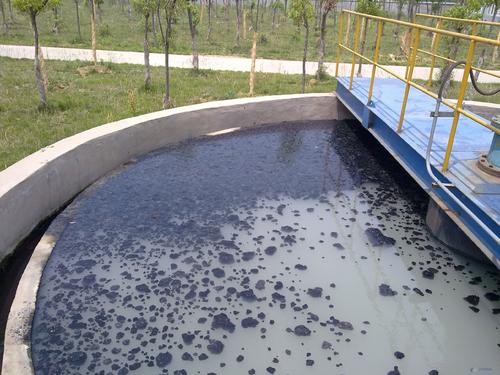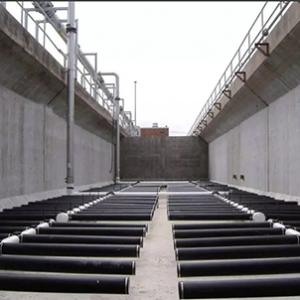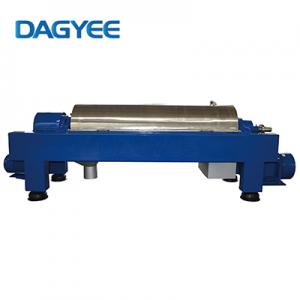Why does the sludge in the secondary settling tank float up
The floating of sludge in the secondary settling tank is one of the common problems in water treatment. According to the direct cause, it can be divided into three categories:Sludge activity disappeared;
Aging or disintegration of sludge;
There are bubbles.
All the root causes of sludge floating in the secondary settling tank can be attributed to these three aspects.

Q: Why does the mud float on the water when it is dead?
After a general organism dies, the cell loses its activity, and the cytoplasm will diffuse, resulting in a decrease in its density. When it is less than the density of water, it will surface. Specific examples can be related to dead fish. The same can be said for mycelium containing a large number of microorganisms. The same principle.
A:Common causes of dead mud and floating up:
The oil content is too high
When the grease content in the influent is too high, after being mixed with the activated sludge, the grease will agglomerate on the surface of the bacteria micelles, causing the aerobic bacteria to die out of oxygen and the sludge floating.
The pH value is too high or too low
As mentioned earlier, the pH requirement of microorganisms for the living environment is 6-9, that is, the pH should be moderate. When pH<4.0 or pH>11.0, the activity of microorganisms will be inhibited or even die, and the sludge will float up.
The influence of salt content
When the salt content in the sewage is too high, the osmotic pressure of the sewage will increase, and the microorganisms will die due to lack of water. This mechanism of death of the microorganisms is the same as the principle of sterilization with salt in human life.
If the salt content is too high, the microorganisms die and the sludge floats.
The temperature is too high
All organisms can only survive in a suitable temperature range. The suitable temperature range for most of the microorganisms that make up activated sludge is generally 20-40°C. When it exceeds 45°C, most of the microorganisms in the activated sludge will die. The mud floats up.
Sludge poisoning
Just like humans will die if poisoned, microbes will die if they are poisoned, and it is extremely easy to be poisoned when dealing with sewage. Toxic substances that can kill microorganisms include heavy metals and their compounds (Hg, Ag, Cu, etc.), organic compounds (phenols and their derivatives, alcohols, aldehydes and certain organic acids, etc.), halogen elements and their compounds (iodine) , Chlorine and its compounds), oxidants (potassium permanganate, etc.), surfactants, dyes, excessive COD, etc.
The microorganisms are poisoned and die, and the sludge floats up.
Q:Why does the aging of the sludge cause the sludge to float up?
The aging of the sludge itself will speed up the flocculation speed and shorten the settling time, but at the same time the bacterial micelles will loosen or even disintegrate, producing fine activated sludge particles and scum.
A:Common causes of sludge aging:
The sludge load is too low
Long-term low-load operation, lack of nutrients in microorganisms, sludge aging and deflocculation.
Nutritional imbalance
The microbial nutrition is unbalanced, the ammonia nitrogen in the water is too high, and the C/N is low, which disintegrates the sludge colloid mechanism.
The sludge age is too long
The sludge age is too long, the sludge structure is scattered, and the sludge disintegrates and floats.
Aeration is too intense
Excessive aeration makes the sludge agitated too intensely, the sludge is broken, and a large number of small bubbles are generated to agglomerate on the flocs, causing the sludge to float up.
Q:Why do air bubbles cause the sludge to float up?
A:This problem can be compared to a life phenomenon. When playing in the playground in the summer, people will use the buoyancy of swimming rings and pet worms to float on the water. The principle that the bubbles in the second settling tank make the sludge float up is the same. The bubbles generated in the pool are equivalent to a swimming ring and a follower, and the bacteria gel mass is equivalent to a person carrying a swimming ring or a follower. When a large number of bubbles are generated in the pool, the bubbles will adhere to the bacteria gel mass and float up with the sludge.
Causes of bubbles in the secondary settling tank and sludge floating:
Denitrification occurs in the secondary sedimentation tank
We know that biochemical processes often have nitrification/denitrification designs. When the aerobic tank has obvious nitrification reaction, and the secondary sedimentation tank is accumulated or the residence time is too long, the secondary sedimentation tank will denitrify and produce N2 bubbles, and the bubbles will adhere On the sludge particles, sludge floating occurs.
Anaerobic digestion of sludge at the bottom of the secondary settling tank
If the bottom sludge of the secondary settling tank is fermented, the CO2 and H2 produced will also agglomerate on the activated sludge, causing the sludge to float. In this case, the floating sludge appears black.
The water contains a lot of surface active substances
When the water contains excessive surface-active substances, bubbles will be generated during the stirring and flow process. These bubbles are easy to adhere to the bacteria gel mass, reducing the specific gravity of the activated sludge and then floating.
Air bubbles in the aeration tank are brought to the precipitation area
The air bubbles in the aeration tank are brought to the sedimentation zone to float up. This sludge is in granular shape and has the same color. The upward turning direction is from the diversion zone wall to the sedimentation zone wall in turbulent flow.



